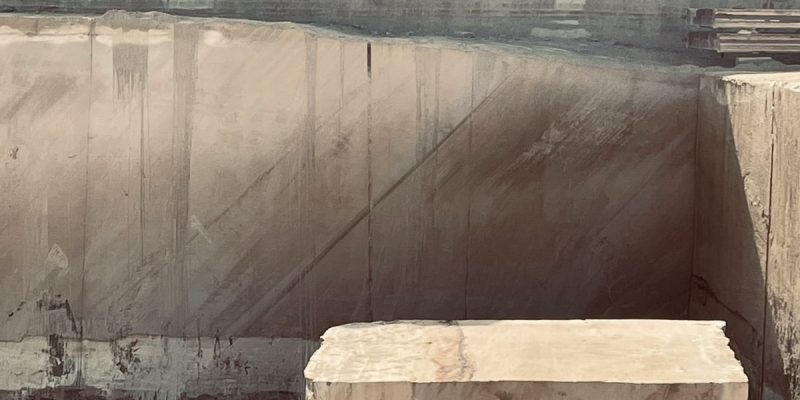How to Choose the Perfect Finish for Your Natural Stone Project
Natural stone is more than just a material: it’s a design statement. Its texture, color, and finish determine not only the appearance of a space but also its technical performance and integration into the architectural context. In this article, we explore the most widely used stone finishes, emphasizing their functional and aesthetic applications in international architectural projects. We also offer practical recommendations based on real-world experience.
1. Why finishes matter
A stone’s finish alters its texture, slip resistance, gloss level, and often its durability in outdoor environments. The same stone may offer very different results depending on the surface treatment. That’s why finish selection is not only a matter of taste—it’s a matter of performance.
For example, in areas with heavy foot traffic or accessibility requirements, a certified anti-slip surface is essential. In indoor spaces like museums or luxury hotels, visual coherence and ease of maintenance become key factors. Finishes also affect how stone behaves under UV exposure, rainfall, and pollution, making the selection crucial for long-term performance.
2. Main finishes and their uses
Bush-hammered
Created by controlled impact, this finish produces a rough, non-slip texture. It’s one of the most common treatments for exterior use in both public and private spaces.
- Advantages: excellent traction, natural appearance, durable under stress.
- Recommended for: wet or icy environments, public squares, ramps, stairs, civic centers.
Flamed
By applying intense heat, the surface flakes off slightly, producing a rough and natural feel. It’s an ideal compromise between technical performance and aesthetics.
- Advantages: organic look, slip resistance, good for modern design.
- Recommended for: facades, plazas, terraces, outdoor furniture, coastal promenades.
Honed
An intermediate polish resulting in a matte, smooth texture. This finish maintains color integrity while eliminating reflections. It balances practicality and elegance.
- Advantages: soft feel, low porosity, modern look, easy to maintain.
- Recommended for: interiors, stairs, retail spaces, hotels, public lobbies.
Polished
This finish provides a glossy, mirror-like surface. It emphasizes the stone’s natural color, pattern, and veins. Common in luxury and decorative applications.
- Advantages: high-end appearance, easy to clean, light-enhancing, elegant contrast.
- Recommended for: lobbies, counters, feature walls, museum interiors, upscale residences.
Sandblasted
Using high-pressure sand, this finish produces a uniform, slightly rough surface. It offers a balanced compromise between texture and visual clarity.
- Advantages: consistent surface, non-reflective, soft visual texture.
- Recommended for: contemporary facades, courtyards, exterior paving, garden walkways.
3. Combining function and style
Architects often combine finishes in a single project. For instance, exterior staircases might have bush-hammered treads with honed risers. Ventilated facades can alternate between flamed and honed pieces to manage light reflection and depth.
Some designers use polished details to create focal points within a honed or sandblasted background, offering contrast and guiding visual attention. This layered approach enriches the architectural expression without losing material unity. It also addresses technical demands without aesthetic compromise.
4. Finish behavior by stone type
Not all finishes are equally effective across all stones. Sandstone responds well to rough textures like flamed and bush-hammered. Limestone performs best with honed and polished surfaces. High-porosity stones may require sealing post-treatment, especially in freeze-thaw climates.
At SAEZ, we perform lab tests and produce sample panels tailored to each project to ensure aesthetic accuracy and functional compliance. We help architects and contractors choose the best option depending on climate, intended use, and installation system.
5. Compliance and certifications
Finishes must meet specific standards: slip resistance, abrasion, porosity, water absorption, fire rating, etc. For public and international projects, we deliver detailed technical documentation and certification (UNE, EN, ASTM), aligned with the country’s legal framework. This accelerates approval processes and ensures reliability in execution.
6. Sustainability and technical efficiency
Mechanical treatments (bush-hammered, honed, sandblasted) have a smaller ecological footprint compared to chemical or resin-based processes. Choosing sustainable finishes supports LEED, BREEAM, and other green certifications by reducing waste, emissions and energy use. We also optimize water consumption during treatment to lower environmental impact.
Additionally, finishes applied in origin reduce on-site labor and dust generation, improving site safety and reducing construction time. This efficiency adds measurable value in international tenders.
7. Real-world experience and support
We have applied these finishes to diverse projects—from historic public stairs to premium wellness centers. In coastal developments, flamed finishes are often selected for their weather resistance. In historic city centers, bush-hammered sandstone blends tradition and performance. Each case requires a tailored approach.
That’s why our team provides end-to-end technical assistance:
- Full-scale mock-ups and finish tests
- On-site installation guidance
- Maintenance and cleaning recommendations
- Custom adjustments based on end-use and region
Conclusion
Choosing the right finish is just as critical as choosing the right stone. At SAEZ Sandstone, we deliver customized technical solutions and factory-applied finishes suited to your project’s unique demands. Our experience in international markets ensures quality, compliance, and visual excellence. Because a well-finished stone doesn’t just look better—it performs better.

